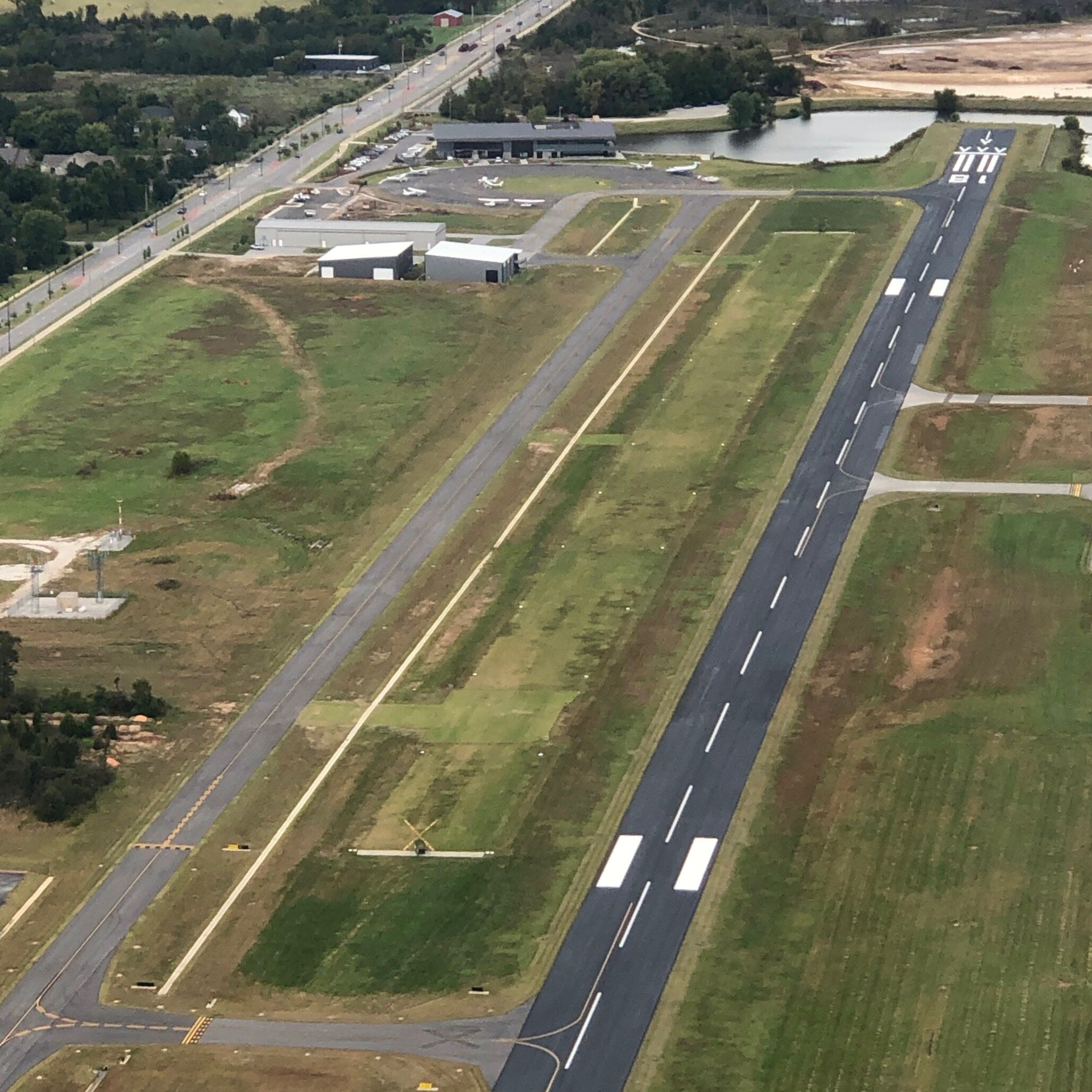“Flying around Northwest Arkansas?
Here are some tips for operating around VBT.”
note: VBT Common Traffic Advisory Frequency (CTAF) has changed to 122.975 as of December 31, 2020.
Listen to VBT AWOS prior to landing for important airport information.
Flying in the Vicinity of VBT
Pilots are urged to listen for traffic and make position reports on the CTAF (122.975) when operating within 10 miles of the field. The Bentonville Airport can become saturated with flight training and other transient aircraft, often a combination of light piston aircraft and faster turboprop and jet aircraft. Good communication is key to streamlined and safe operations!
Use caution when operating West of VBT to avoid inadvertently entering XNA Class C airspace. The Bentonville Airport is bordered by XNA Class C airspace (SFC to 2900’ MSL) and the ROG and ASG Class D airspaces. Pilots are urged to use all available resources to maintain situational awareness and avoid entering controlled airspace without the proper equipment and clearances.
We strongly advise obtaining VFR Flight Following prior to arriving into or departing from VBT. Contact Razorback Clearance on the ground on 121.05 prior to departing, or contact Razorback Approach on 126.6 in the air. Traffic advisories from ATC are always a good thing to have!
Suggested VFR Arrival Procedures
Due to the high volume of traffic at VBT, standard traffic pattern entries via downwind are encouraged for VFR aircraft:
Runway 18 in use:
Arriving from 001° to 180°: Follow I-49, remaining outside of ROG Class D airspace. Enter left downwind for Runway 18 on a 45-degree angle.
Arriving from 181° to 360°: Cross midfield to enter left downwind for Runway 18.
Runway 36 in use:
Keep your downwind and base legs within 1 NM of the field to avoid entering XNA Class C airspace.
Arriving from 001° to 180°: Follow I-49, remaining outside of ROG Class D airspace. Cross midfield to enter left downwind for Runway 36.
Arriving from 181° to 360°: Use caution to avoid entering XNA Class C airspace. Enter left downwind for Runway 36 on a 45-degree angle.
Operating on the Fieldhouse Ramp
The flow of traffic around the circular ramp is clockwise. Parking spots with rope tiedowns are located around the outer edge of the circle. When entering the ramp, please follow the painted arrows clockwise around the circle and proceed to the spot designated by one of our line crewmembers.
The ramp is sloped in some areas. Your aircraft may begin to roll downhill if left unchocked with the brakes off. Please wait for a line crewmember to chock your aircraft before exiting your aircraft, or use your parking brake if a crewmember is unavailable.
Overnight parking is available on both the East and West ramps. Limited overnight hangar space may be available upon request.
Additional tie down spots and maintenance facilities are located on the East ramp.
When departing, please do not perform runups in parking spots. We would greatly like to avoid disturbing other aircraft, the restaurant, outdoor seating areas, and parking lots with prop blast.
We recommend performing runups on taxiway C (south of the Fieldhouse ramp near the private hangars). Point the tail of your aircraft away from any areas that may be disturbed by prop blast. Use caution for other aircraft that may be entering or exiting the hangar area.
Turf Runway Operations
VBT has a 2400-foot bermuda grass strip designated Runway 17/35, parallel to Runway 18/36 on the West side. Because of this unique arrangement, here are some tips to make operations on the turf runway as smooth as possible.
The turf runway (17/35) and the paved runway (18/36) are treated as if they are a single runway. Basically, if an aircraft is operating on the grass strip then the paved runway must remain clear, and vice-versa. A single aircraft may operate on either 17/35 or 18/36, but aircraft may not operate on both runways simultaneously.
The turf runway is usable only during daytime VFR conditions. The strip is closed nightly from sunset to sunrise as well as when the VBT airport is operating under IFR. The runway may also be closed periodically due to wet conditions. Visit Airfield.Guide/VBT for the current operating status of the turf runway.
The turf runway should only be accessed from the West side of the airport. There are three turf taxiways on the West side connecting to Taxiway A.
The 17/35 hold short markings are different from the 18/36 hold short markings. Please see the diagrams below. If an aircraft is using the grass strip, other aircraft should avoid operating in the red shaded areas.
When the grass strip is in use, avoid the red shaded areas:
Hold short lines on and near the Fieldhouse ramp
Hold short lines on Taxiway A
IFR Operations at VBT
To receive an IFR clearance or cancel IFR on the ground, contact Razorback Clearance on 121.05. Please be sure to call for your clearance BEFORE entering the runway, as ATC may not be able to release you for departure immediately. With other IFR traffic in the vicinity, expect “hold for release” as part of your clearance.
After landing, contact Razorback Clearance on 121.05 as soon as practicable to cancel IFR. Alternatively, pilots are asked to cancel IFR in the air if landing in VMC. Other IFR aircraft operating at VBT may have to wait on you before they can be released for departure or cleared for an approach, so please be courteous to one another by canceling sooner rather than later!




